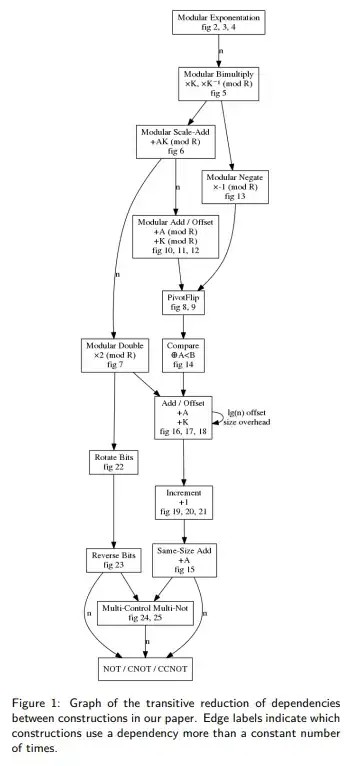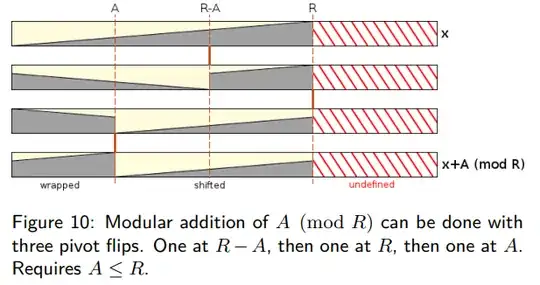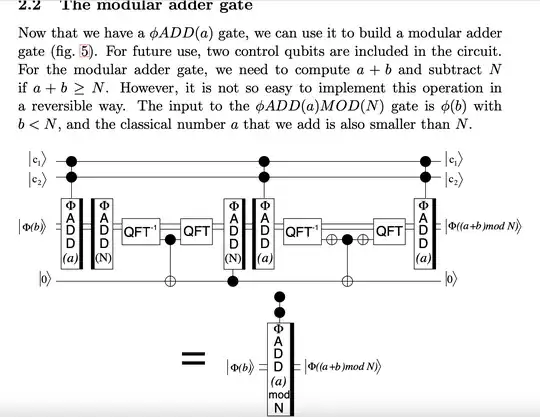Shouldn't adding $N=2^n$ to $a$ cause the phase to multiplied by $exp(2\pi i (a+N))=exp(2\pi i a)$ in Fourier space, so you get the same result?
Right, if $N$ is a power of 2, you don't need a modular adder circuit.
You just use a normal adder circuit.
This is true of all inplace adder circuits, not just the Draper adder circuit.
Sometimes people call normal adder circuits "modular adder circuits", distinguishing them from circuits where the number of output bits is larger than the number of input bits so that there is never an overflow. I don't really like that naming, since it's not reflective of what's cheap vs what's expensive.
the circuit in the paper is much more complicated
The circuit in the paper is for working mod $N$ where $N$ isn't a power of 2, such as for Shor's algorithm. So it can't just use a normal adder.
Effectively, the circuit is doing this:
# decomposition of a += b (mod N)
a += b
let tmp = (a >= N)
if tmp:
a -= N
del tmp = (a < b)
but with some controls on key operations that ensure nothing happens if the controls are OFF, and with the comparison operations decomposed into checking whether an addition or subtraction overflows.
Note that the paper "Factoring with n+2 clean qubits and n-1 dirty qubits
" has diagrams and working code implementing modular multiplications. The constructions are a bit convoluted because they go out of their way to use minimal workspace, but they are also built entirely out of classical gets (NOT, CNOT, TOFFOLI); no Hadamards or Fourier transforms. That makes them easier to check.




